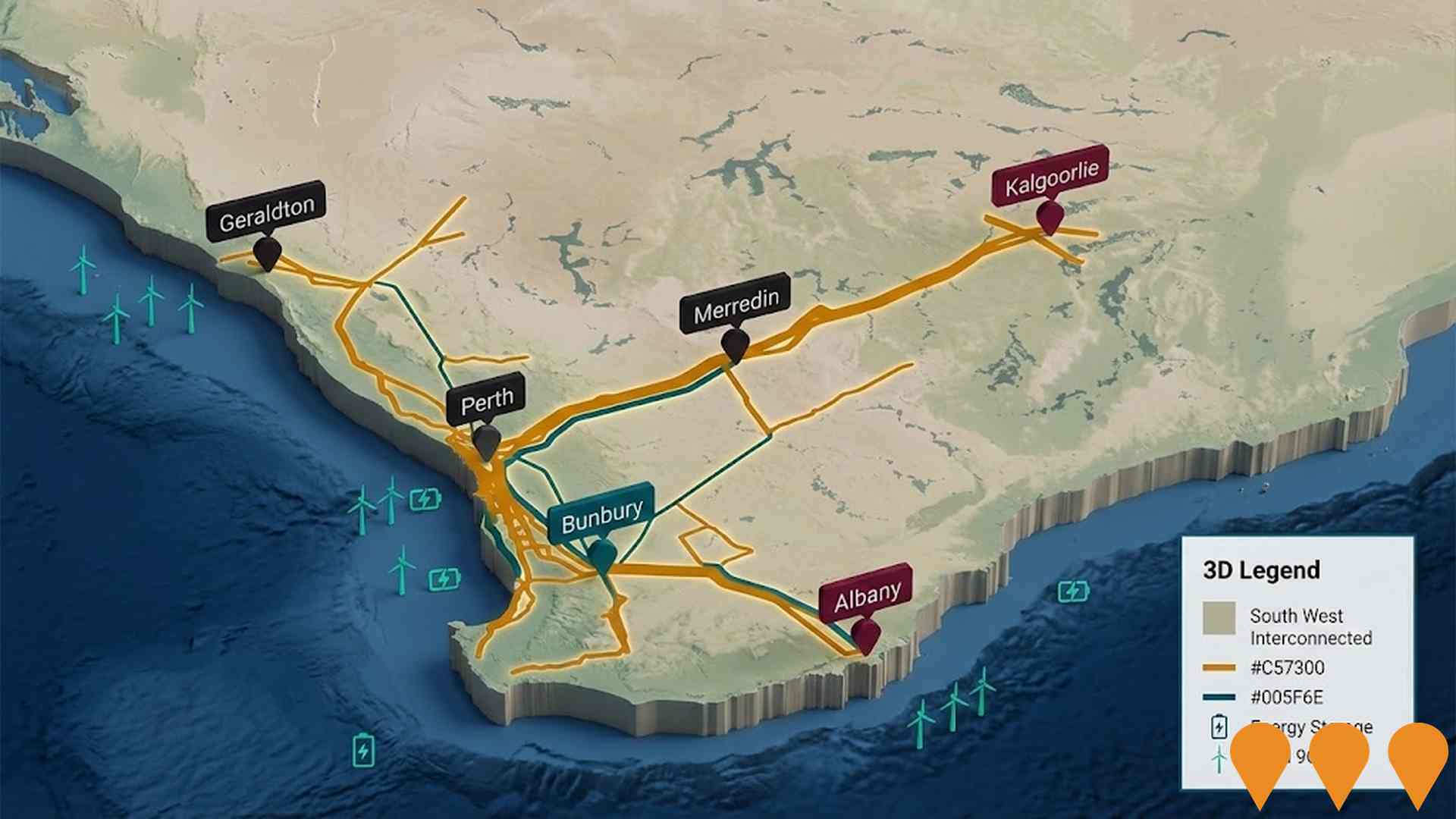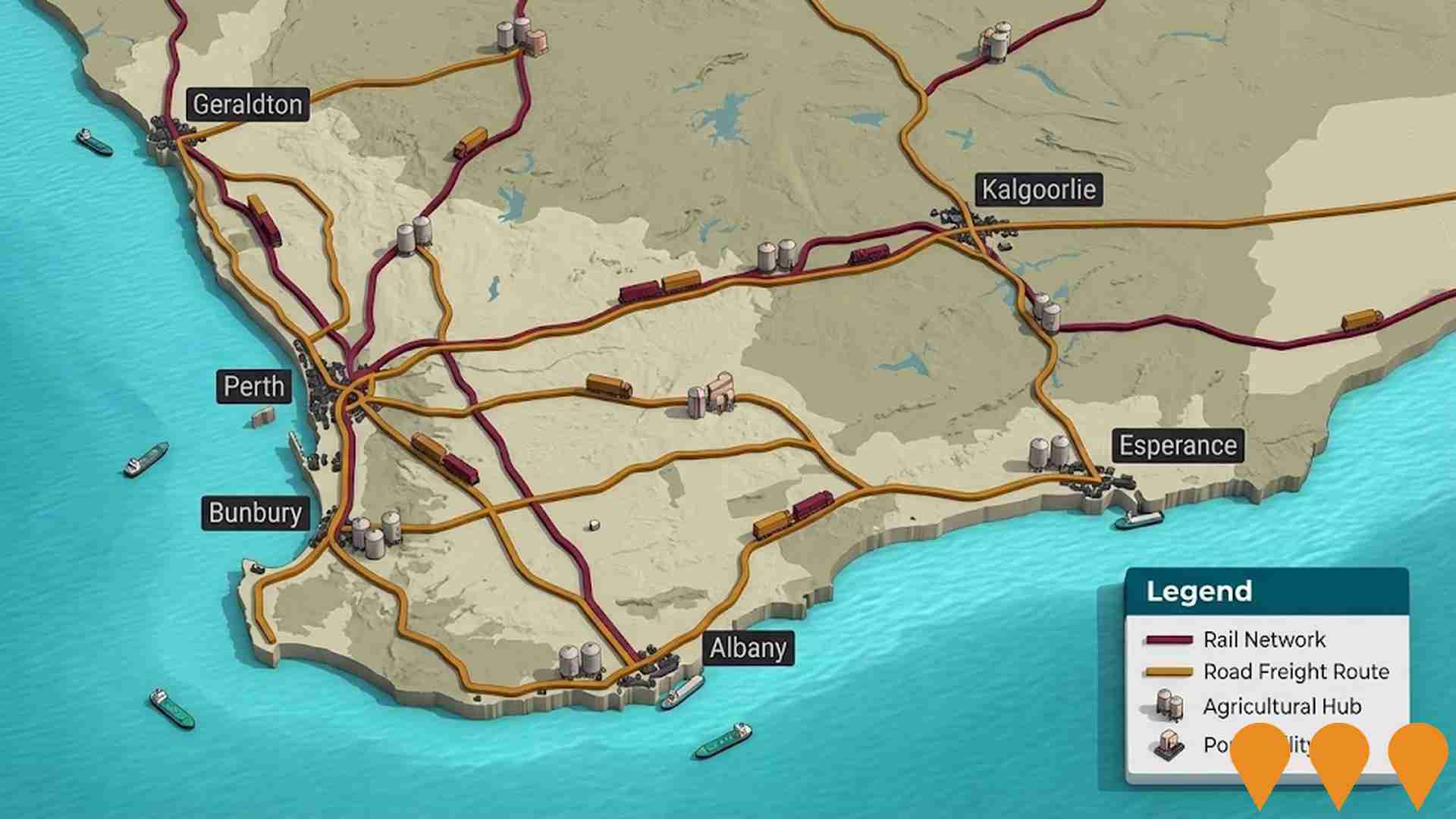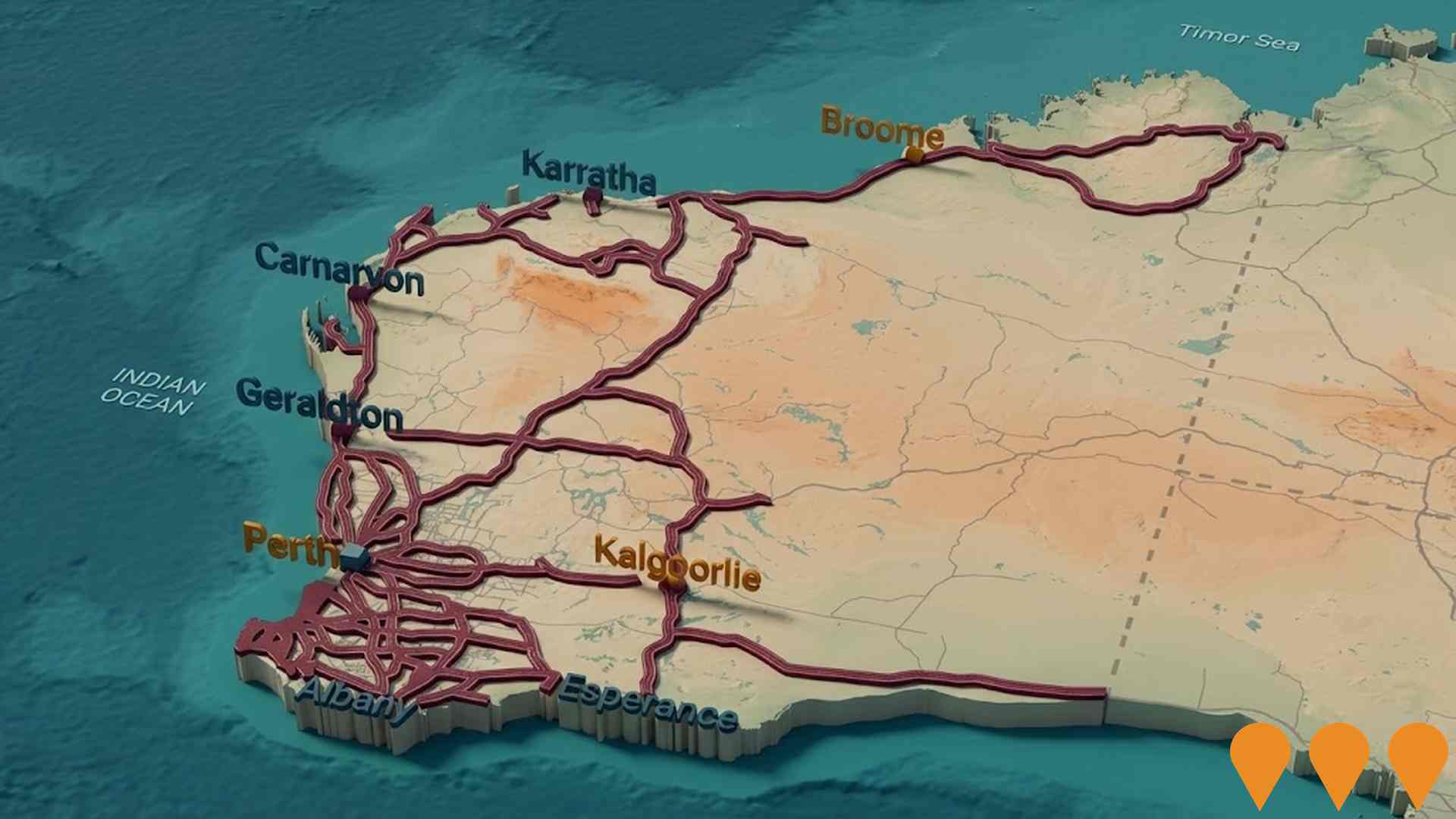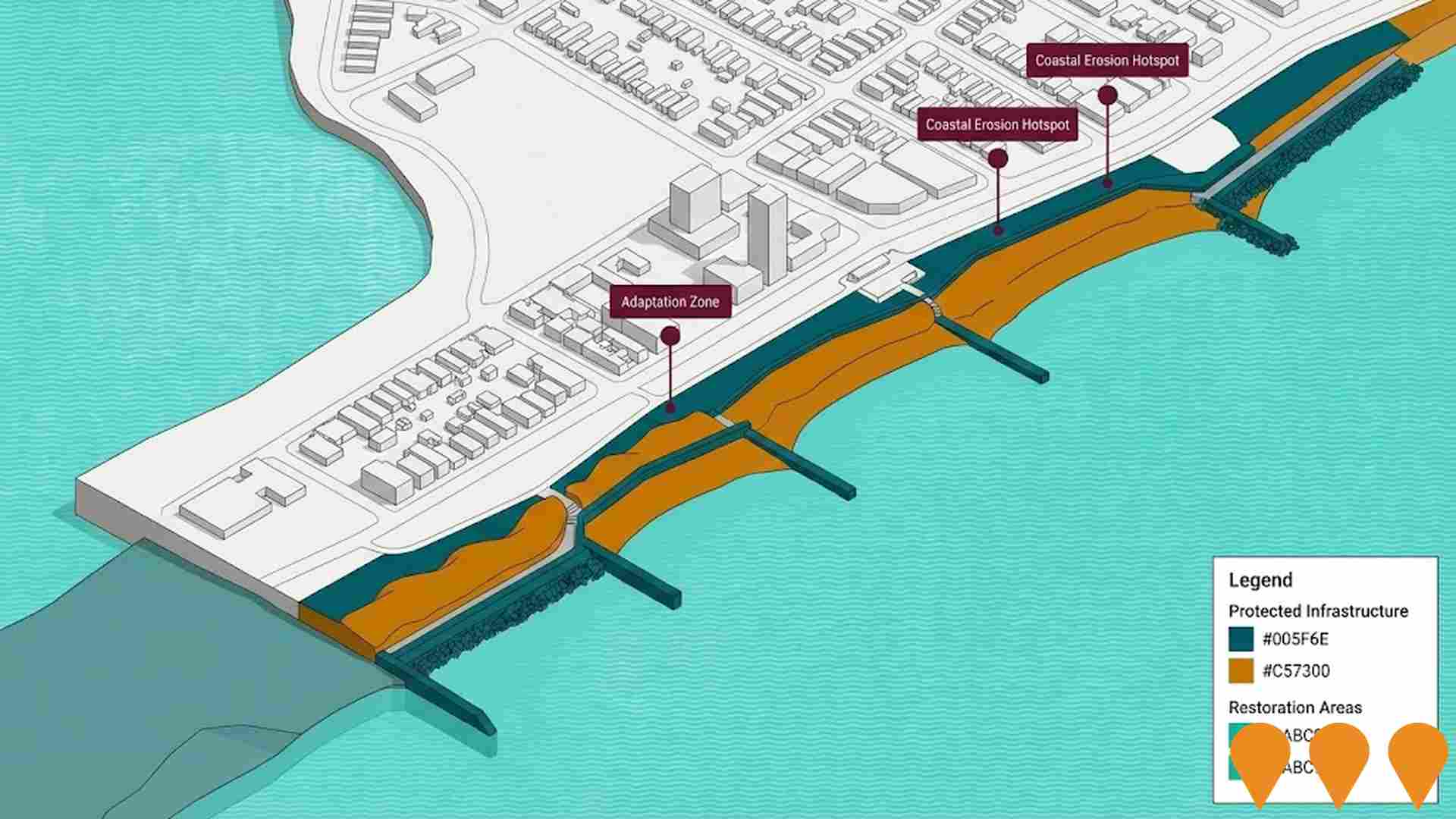Chart Color Schemes
est. as @ -- *
ABS ERP | -- people | --
2021 Census | -- people
Sales Activity
Curious about local property values? Filter the chart to assess the volume and appreciation (including resales) trends and regional comparisons, or scroll to the map below view this information at an individual property level.
Find a Recent Sale
Sales Detail
Population
Gnowangerup is positioned among the lower quartile of areas assessed nationally for population growth based on AreaSearch's assessment of recent, and medium term trends
Gnowangerup's population is 3,067 as of Aug 2025. This reflects a growth of 205 people since the 2021 Census, which reported a population of 2,862. The increase is inferred from ABS data showing an estimated resident population of 3,010 in June 2024 and an additional 55 validated new addresses since then. This results in a population density of 0.20 persons per square kilometer. Gnowangerup's growth rate of 7.2% since the census is within 0.9 percentage points of the SA3 area's rate of 8.1%. Natural growth contributed approximately 63.0% of overall population gains recently.
AreaSearch uses ABS/Geoscience Australia projections for each SA2 area, released in 2024 with a base year of 2022. For areas not covered by this data and post-2032 estimates, AreaSearch utilises growth rates by age cohort from the ABS's Greater Capital Region projections (released in 2023, based on 2022 data). Future population projections indicate a median increase for locations outside capital cities, with Gnowangerup expected to expand by 336 persons to 2041, representing a total increase of 9.1% over the 17 years.
Frequently Asked Questions - Population
Development
AreaSearch analysis of residential development drivers sees Gnowangerup recording a relatively average level of approval activity when compared to local markets analysed countrywide
Gnowangerup averaged approximately 24 new dwelling approvals annually. Over the past five financial years, from FY-21 to FY-25, a total of 123 homes were approved. In FY-26, two dwellings have been approved so far.
On average, over these five years, 0.8 new residents arrived per new home built. This suggests that supply has met or exceeded demand, offering greater buyer choice and supporting potential population growth above projections. The average expected construction cost value of new dwellings was $466,000.
In the current financial year, $12.0 million in commercial development approvals have been recorded, indicating moderate levels of commercial development. Compared to the Rest of WA, Gnowangerup has shown elevated construction activity, with a 46.0% increase per person over the five-year period. This has maintained good buyer choice while supporting existing property values. All new constructions in Gnowangerup have been detached houses, preserving the area's traditional low-density character and focusing on family homes appealing to those seeking space. With approximately 113 people per approval, Gnowangerup reflects a developing area. Population forecasts indicate that Gnowangerup will gain 279 residents by 2041. At current development rates, new housing supply should comfortably meet demand, providing good conditions for buyers and potentially supporting growth beyond current population projections.
Frequently Asked Questions - Development
Infrastructure
Gnowangerup has emerging levels of nearby infrastructure activity, ranking in the 23rdth percentile nationally
Changes to local infrastructure significantly influence an area's performance. AreaSearch has identified three projects likely to impact the region. Notable projects include Southdown Magnetite Mine, Katanning Gold Project, South Coast Highway Improvements: Albany To Esperance, and South West Interconnected System Transformation. The following list details those most relevant.
Professional plan users can use the search below to filter and access additional projects.
INFRASTRUCTURE SEARCH
 Denotes AI-based impression for illustrative purposes only, not to be taken as definitive under any circumstances. Please follow links and conduct other investigations from the project's source for actual imagery. Developers and project owners wishing us to use original imagery please Contact Us and we will do so.
Denotes AI-based impression for illustrative purposes only, not to be taken as definitive under any circumstances. Please follow links and conduct other investigations from the project's source for actual imagery. Developers and project owners wishing us to use original imagery please Contact Us and we will do so.
Frequently Asked Questions - Infrastructure
Resources Community Investment Initiative
A $750 million partnership between the Western Australian Government and seven major resource companies (Rio Tinto, BHP, Woodside Energy, Chevron Australia, Mineral Resources, Fortescue, Roy Hill) to co-fund community, social and regional infrastructure projects across regional Western Australia, with strong focus on the Pilbara, Goldfields, Kimberley, Mid West and Gascoyne.
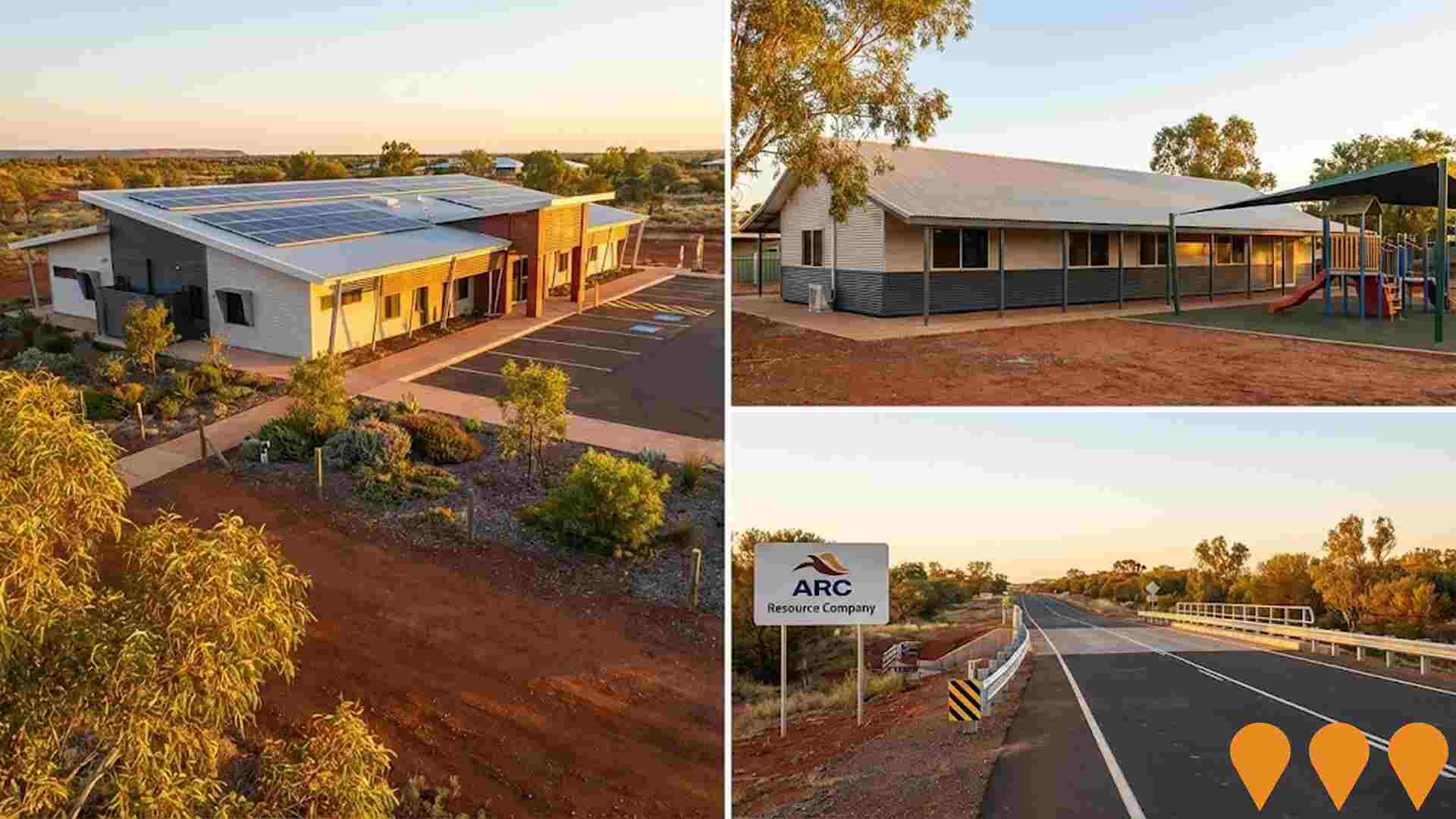
Katanning Gold Project
A gold mining development with a 3.6Mtpa Carbon-in-Leach gold processing plant and 10-year mine life, targeting first gold production for late CY2027. The Definitive Feasibility Study (DFS) confirmed a 1.25Moz Ore Reserve, 2.44Moz Mineral Resource, and an average annual production of 113.7koz of gold over the life-of-mine. The project is advancing with securing land access, project financing and implementation.
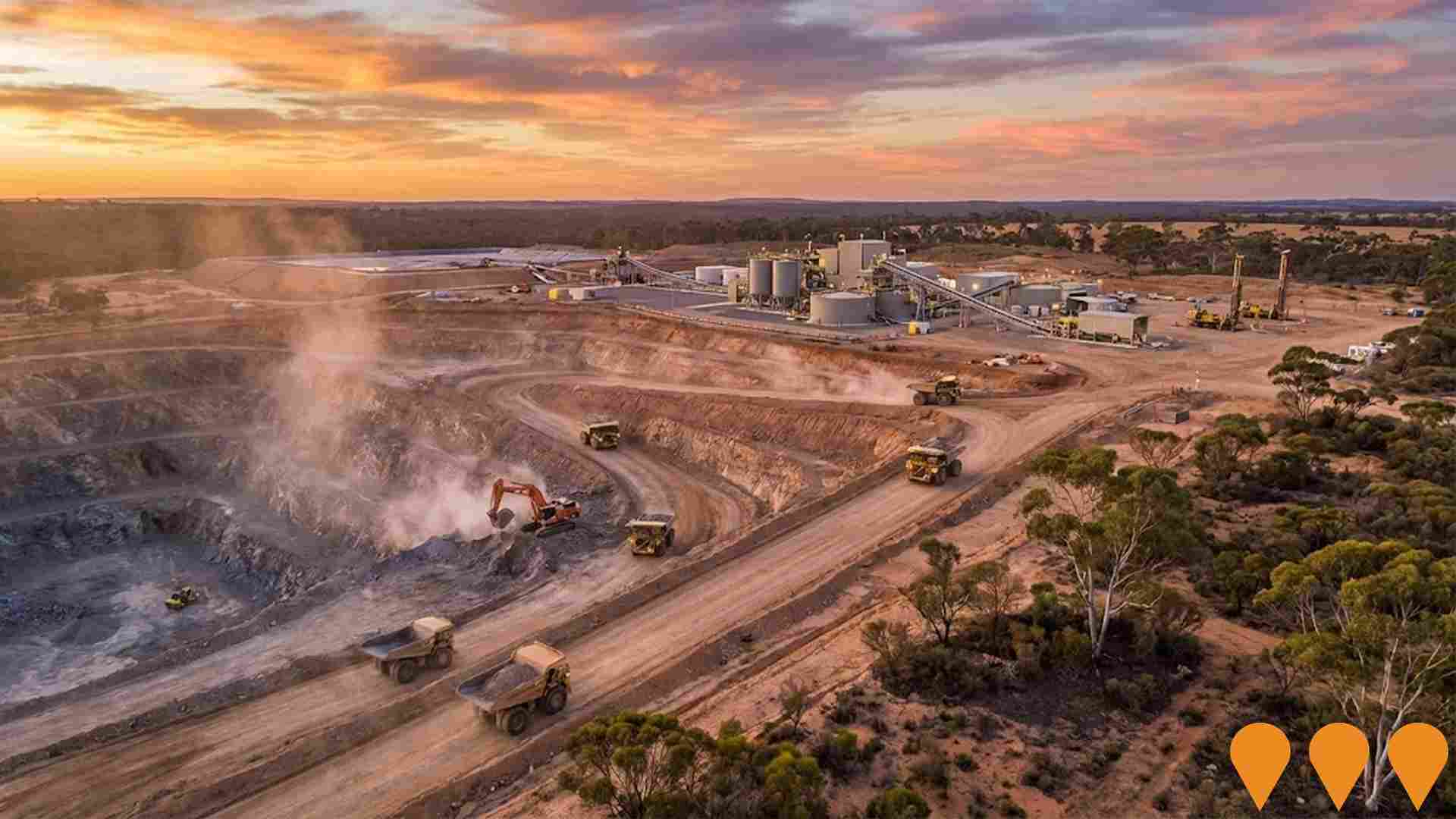
Enabling Infrastructure for Hydrogen Production
Australia has completed the National Hydrogen Infrastructure Assessment (NHIA) to 2050 and refreshed its National Hydrogen Strategy (2024). The programmatic focus has shifted to planning and enabling infrastructure through measures such as ARENA's Hydrogen Headstart and the Hydrogen Production Tax Incentive (from April 2025). Round 2 of Hydrogen Headstart consultation occurred in 2025. Collectively these actions aim to coordinate investment in transport, storage, water and electricity inputs linked to Renewable Energy Zones and priority hubs, supporting large-scale renewable hydrogen production and future export supply chains.
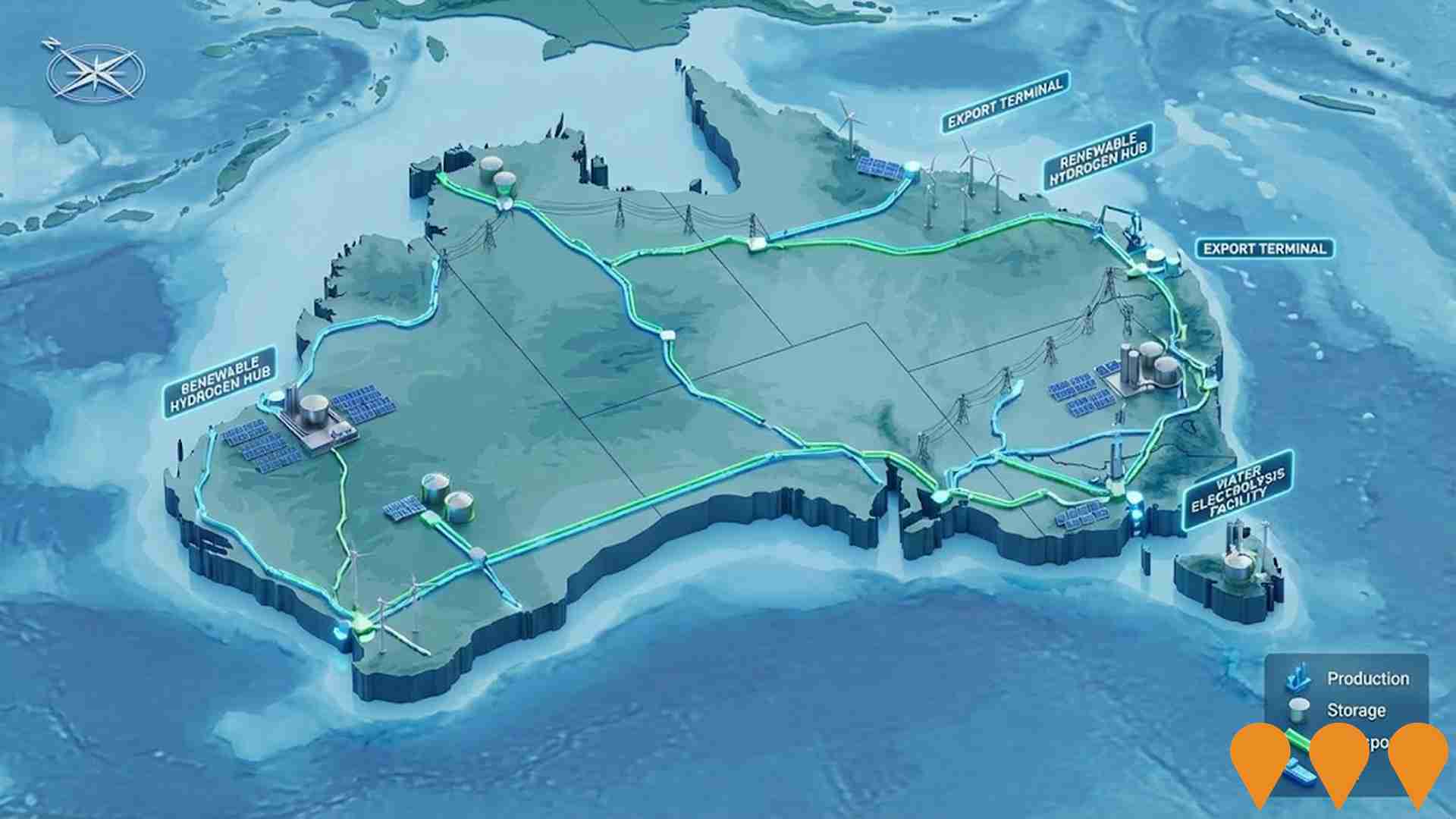
Bulk Water Supply Security
Nationwide program led by the National Water Grid Authority to improve bulk water security and reliability for non-potable and productive uses. Activities include strategic planning, science and business cases, and funding of state and territory projects such as storages, pipelines, dam upgrades, recycled water and efficiency upgrades to build drought resilience and support regional communities, industry and the environment.

National EV Charging Network (Highway Fast Charging)
Partnership between the Australian Government and NRMA to deliver a backbone EV fast charging network on national highways. Program funds and co-funds 117 DC fast charging sites at roughly 150 km intervals to connect all capital cities and regional routes, reducing range anxiety and supporting EV uptake.

WA Regional Digital Connectivity Program (WARDCP)
Statewide co-investment program delivering new and upgraded mobile, fixed wireless and broadband infrastructure to improve reliability, coverage and performance for regional and remote Western Australia. Current workstreams include the Regional Telecommunications Project, State Agriculture Telecommunications Infrastructure Fund, and the WA Regional Digital Connectivity Program (WARDCP).

Network Optimisation Program - Roads
A national program concept focused on improving congestion and reliability on urban road networks by using low-cost operational measures and technology (e.g., signal timing, intersection treatments, incident management) to optimise existing capacity across major city corridors.

Southdown Magnetite Mine
A proposed project to extract 10 million tonnes of iron ore per annum for export via Albany Port. Expected to create up to 2,000 construction jobs and 600 operational jobs. Postponed indefinitely due to unfavourable market conditions.

Employment
Employment conditions in Gnowangerup rank among the top 10% of areas assessed nationally
Gnowangerup has a skilled workforce with diverse sector representation and an unemployment rate of 0.9% as of June 2025. There are 1780 residents employed while the unemployment rate is 3.2% below Rest of WA's rate of 3.2%.
Workforce participation in Gnowangerup is 66.8%, compared to Rest of WA's 59.4%. Leading employment industries among residents comprise agriculture, forestry & fishing, education & training, and public administration & safety. Agriculture, forestry & fishing has an employment concentration of 5.7 times the regional average while mining employs just 0.8% of local workers compared to Rest of WA's 11.7%. Labour force levels decreased by 1.7% over the 12 months to June 2025, with employment decreasing by 0.7%, resulting in a fall of 1.0 percentage points in unemployment rate.
In contrast, Rest of WA experienced employment growth of 1.1% and labour force growth of 0.5%. National employment forecasts from Jobs and Skills Australia (May 2025) suggest Gnowangerup's local growth could be approximately 4.0%% over five years and 9.6% over ten years based on industry-specific projections.
Frequently Asked Questions - Employment
Income
The area's income profile falls below national averages based on AreaSearch analysis
Gnowangerup's median income among taxpayers was $51,949 in financial year 2022. The average income stood at $68,052 during the same period. This compares to figures for Rest of WA which were $57,323 and $71,163 respectively. By September 2025, current estimates project median income to be approximately $59,326 and average income at around $77,715, based on Wage Price Index growth of 14.2% since financial year 2022. According to the 2021 Census, personal income ranks at the 71st percentile ($931 weekly) while household income sits at the 35th percentile. The $1,500 - 2,999 earnings band captures 30.9% of Gnowangerup's community (947 individuals), consistent with broader trends across the surrounding region showing 31.1% in the same category. Housing costs allow for 93.4% retention, though disposable income is below average at the 46th percentile. The area's SEIFA income ranking places it in the 5th decile.
Frequently Asked Questions - Income
Housing
Gnowangerup is characterized by a predominantly suburban housing profile, with above-average rates of outright home ownership
In Gnowangerup, as per the latest Census evaluation, 95.8% of dwellings were houses with the remaining 4.2% being other types such as semi-detached homes, apartments, and 'other' dwellings. This is compared to Non-Metro WA's 92.1% houses and 8.0% other dwellings. Home ownership in Gnowangerup stood at 48.7%, with mortgaged properties at 24.0% and rented ones at 27.3%. The median monthly mortgage repayment was $867, significantly lower than Non-Metro WA's average of $1,490 and the national average of $1,863. Meanwhile, the median weekly rent in Gnowangerup was recorded at $180, substantially below Non-Metro WA's figure of $280 and the national average of $375.
Frequently Asked Questions - Housing
Household Composition
Gnowangerup has a typical household mix, with a higher-than-average median household size
Family households comprise 68.7% of all households, including 32.1% couples with children, 30.8% couples without children, and 5.3% single parent families. Non-family households account for the remaining 31.3%, with lone person households at 29.5% and group households comprising 1.8%. The median household size is 2.5 people, larger than the Rest of WA average of 2.4.
Frequently Asked Questions - Households
Local Schools & Education
Gnowangerup faces educational challenges, with performance metrics placing it in the bottom quartile of areas assessed nationally
The area's university qualification rate is 17.2%, significantly lower than Australia's average of 30.4%. Bachelor degrees are the most common, at 14.3%, followed by graduate diplomas (1.5%) and postgraduate qualifications (1.4%). Vocational credentials are prominent, with 35.9% of residents aged 15+ holding them - advanced diplomas (8.3%) and certificates (27.6%). Educational participation is high at 26.9%, including primary education (13.3%), secondary education (6.6%), and tertiary education (1.5%).
Gnowangerup has a network of 9 schools educating approximately 390 students, with typical Australian school conditions (ICSEA: 982) and balanced educational opportunities. This includes 6 primary schools and 3 K-12 schools. School places per 100 residents are lower than the regional average (12.7 vs 15.9), with some students likely attending schools in nearby areas. Note: for schools showing 'n/a' for enrolments, please refer to the parent campus.
Frequently Asked Questions - Education
Schools Detail
Nearby Services & Amenities
Transport
Transport servicing is very low compared to other areas nationally based on assessment of service frequency, route connectivity and accessibility
Transport analysis shows nine active stops operating within Gnowangerup, offering mixed bus services. These stops are served by three distinct routes, collectively offering six weekly passenger trips. Transport accessibility is rated limited, with residents typically located 21690 meters from the nearest stop.
Service frequency averages zero trips per day across all routes, equating to approximately zero weekly trips per individual stop.
Frequently Asked Questions - Transport
Transport Stops Detail
Health
The level of general health in Gnowangerup is notably higher than the national average with both young and old age cohorts seeing low prevalence of common health conditions
Gnowangerup shows better-than-average health results, with both young and elderly residents having low rates of common health issues. Approximately 53% (~1,637 people) have private health cover, higher than the Rest of WA's 49.5%.
The most prevalent conditions are arthritis (8.1%) and mental health problems (7.6%), while 71.5% report no medical ailments, compared to 64.7% in Rest of WA. Residents aged 65 and over comprise 14.6% (449 people), lower than the Rest of WA's 21.0%. Seniors' health outcomes are above average, similar to the general population's profile.
Frequently Asked Questions - Health
Cultural Diversity
Gnowangerup ranks below the Australian average when compared to other local markets across a number of language and cultural background related metrics
Gnowangerup, as per the 2016 Census, had a cultural diversity index of below average. Its population was predominantly Australian-born citizens speaking English at home: 84.1%, 86.0%, and 94.1% respectively. Christianity was the major religion in Gnowangerup, with 43.7%, slightly higher than the Rest of WA's 42.5%.
Ancestry-wise, Australian (35.4%) and English (32.0%) were dominant, both exceeding regional averages of 29.6% and 18.2% respectively. Scottish ancestry was also notable at 7.2%. Some ethnic groups showed significant variations: Maori at 1.1% compared to 0.5%, South African at 0.7% versus 0.6%, and Filipino at 1.7% against 1.2%.
Frequently Asked Questions - Diversity
Age
Gnowangerup's population is slightly older than the national pattern
In Gnowangerup, the median age is 38 years, which is slightly below the Rest of WA average of 40 but aligns with the Australian median of 38. The town has an over-representation of the 0-4 cohort at 8.7% compared to the Rest of WA average, and an under-representation of the 75-84 age group at 3.1%. Post the 2021 Census, the 35-44 age group increased from 13.8% to 15.0%, while the 55-64 cohort decreased from 14.7% to 12.9%. By 2041, demographic projections indicate significant changes in Gnowangerup's age profile. The 25-34 cohort is projected to grow by 38%, adding 156 residents to reach 567. Conversely, both the 85+ and 15-24 age groups are expected to see reduced numbers.

